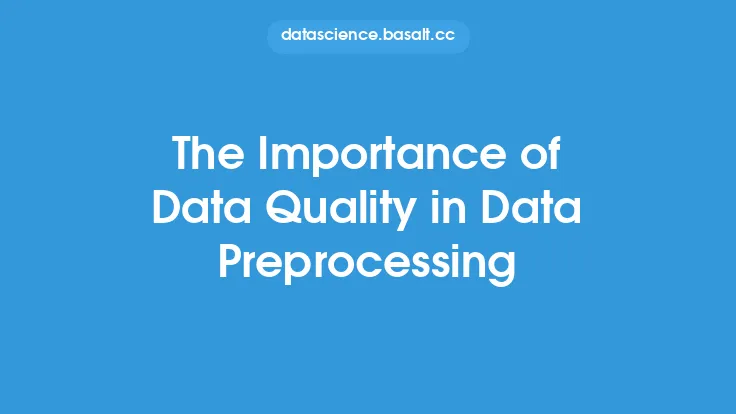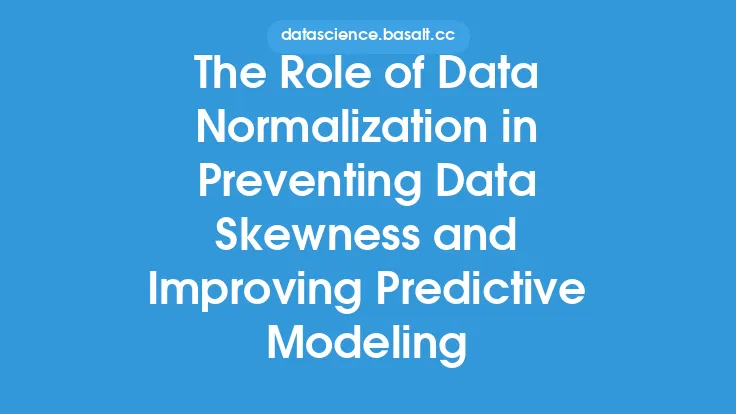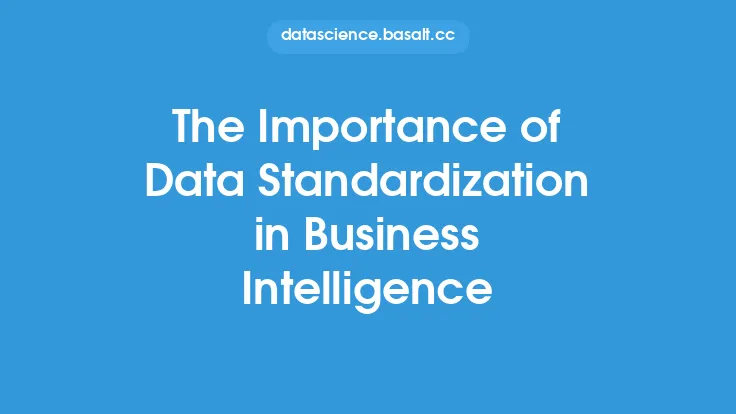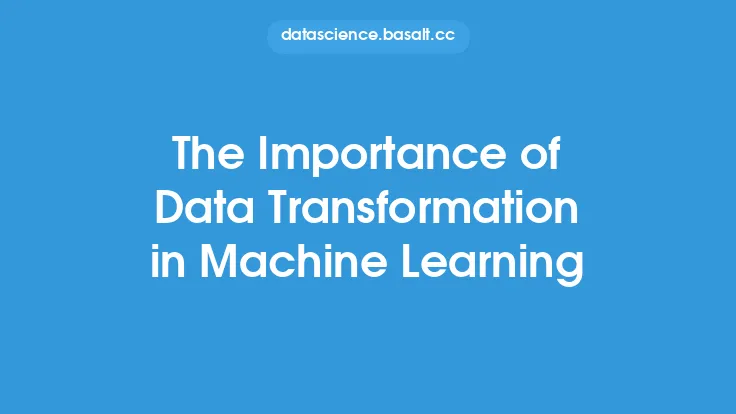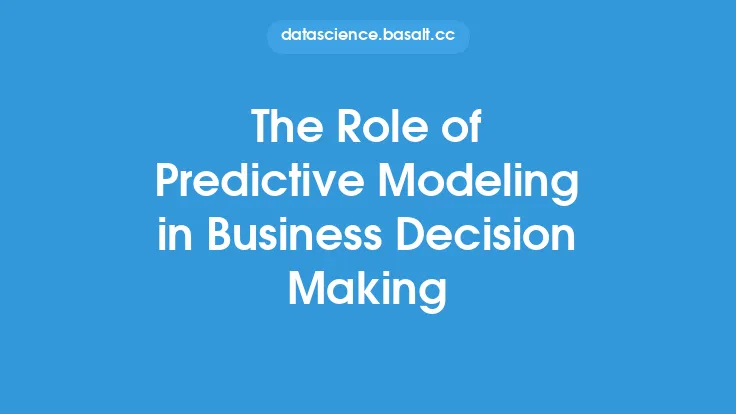Data quality is a critical component of predictive modeling, as it directly affects the accuracy and reliability of the models. Predictive models are only as good as the data they are trained on, and poor data quality can lead to biased, inaccurate, or misleading results. In this article, we will explore the importance of data quality in predictive modeling, the types of data quality issues that can arise, and strategies for ensuring high-quality data.
Understanding Data Quality Issues
Data quality issues can arise from a variety of sources, including data collection, data storage, and data processing. Some common data quality issues include missing or incomplete data, noisy or erroneous data, inconsistent data, and biased data. Missing or incomplete data can occur when data is not collected or recorded properly, or when data is lost or corrupted during storage or transmission. Noisy or erroneous data can occur when data is collected or recorded incorrectly, or when data is contaminated with errors or outliers. Inconsistent data can occur when data is collected or recorded in different formats or units, or when data is not properly standardized. Biased data can occur when data is collected or recorded in a way that is biased towards a particular group or outcome.
The Impact of Data Quality on Predictive Models
Data quality issues can have a significant impact on predictive models, leading to reduced accuracy, increased error rates, and decreased reliability. Poor data quality can lead to overfitting or underfitting, where the model is too complex or too simple, respectively. Overfitting can occur when a model is trained on noisy or erroneous data, and learns to fit the noise rather than the underlying patterns. Underfitting can occur when a model is trained on incomplete or inconsistent data, and fails to capture the underlying relationships. Data quality issues can also lead to biased models, where the model is biased towards a particular group or outcome.
Strategies for Ensuring High-Quality Data
Ensuring high-quality data is critical for building accurate and reliable predictive models. Some strategies for ensuring high-quality data include data cleaning and preprocessing, data validation and verification, data standardization and normalization, and data quality monitoring and reporting. Data cleaning and preprocessing involve removing missing or erroneous data, handling outliers and anomalies, and transforming data into a suitable format for modeling. Data validation and verification involve checking data for accuracy and consistency, and ensuring that data meets the required standards. Data standardization and normalization involve converting data into a standard format, and scaling data to a common range. Data quality monitoring and reporting involve tracking data quality metrics, and reporting on data quality issues and trends.
Data Preprocessing Techniques
Data preprocessing is a critical step in ensuring high-quality data for predictive modeling. Some common data preprocessing techniques include handling missing values, removing outliers and anomalies, transforming data, and feature scaling. Handling missing values involves deciding what to do with missing data, such as imputing values or removing rows with missing data. Removing outliers and anomalies involves identifying and removing data points that are significantly different from the rest of the data. Transforming data involves converting data into a suitable format for modeling, such as converting categorical variables into numerical variables. Feature scaling involves scaling data to a common range, to prevent features with large ranges from dominating the model.
Data Quality Metrics
Data quality metrics are used to measure the quality of data, and to track data quality issues and trends. Some common data quality metrics include accuracy, completeness, consistency, and timeliness. Accuracy refers to the degree to which data is correct and free from errors. Completeness refers to the degree to which data is comprehensive and includes all required information. Consistency refers to the degree to which data is consistent in format and content. Timeliness refers to the degree to which data is up-to-date and relevant.
Best Practices for Data Quality
Best practices for data quality involve implementing procedures and protocols for ensuring high-quality data, and continuously monitoring and improving data quality. Some best practices for data quality include establishing data quality standards, implementing data quality checks, providing training and support, and continuously monitoring and reporting on data quality. Establishing data quality standards involves defining the requirements for data quality, and establishing procedures for ensuring that data meets those standards. Implementing data quality checks involves checking data for accuracy, completeness, consistency, and timeliness, and taking corrective action when data quality issues are identified. Providing training and support involves providing training and support to staff on data quality procedures and protocols, and ensuring that staff have the skills and knowledge needed to ensure high-quality data. Continuously monitoring and reporting on data quality involves tracking data quality metrics, and reporting on data quality issues and trends.
Conclusion
In conclusion, data quality is a critical component of predictive modeling, and ensuring high-quality data is essential for building accurate and reliable models. Data quality issues can arise from a variety of sources, and can have a significant impact on predictive models. Strategies for ensuring high-quality data include data cleaning and preprocessing, data validation and verification, data standardization and normalization, and data quality monitoring and reporting. By implementing best practices for data quality, and continuously monitoring and improving data quality, organizations can ensure that their predictive models are accurate, reliable, and effective.
